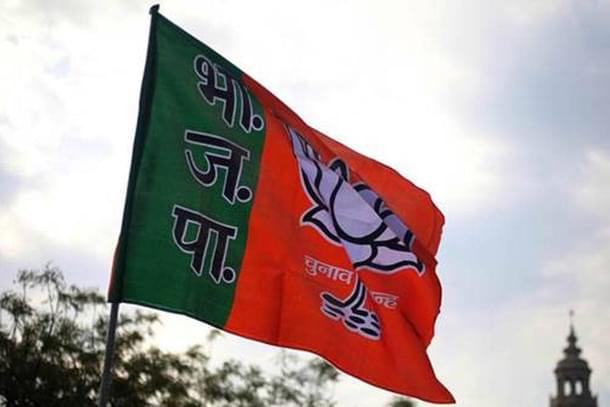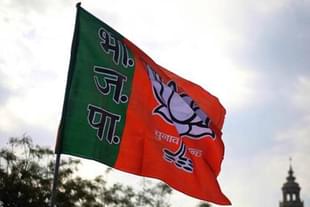Politics
IT Cell 3.0 – Part 2
Banuchandar Nagarajan
Aug 18, 2024, 04:19 PM | Updated Aug 19, 2024, 09:48 AM IST
Save & read from anywhere!
Bookmark stories for easy access on any device or the Swarajya app.


The challenges of the times and the growth arc of Bharatiya Janata Party's IT department was presented in Part 1. Now, let us now look at the muscles to be developed by the "IT Cell 3.0" for giving the party an edge in the 2029 parliamentary elections.
With political parties moving from being "karyakarta based" to more "communication based" entities, and with information consumption moving decisively away from the mainstream media to the Internet, it is imperative that the BJP allocates more resources to modernising the IT department.
The 25 ideas listed below are in no particular order and needless to say, are not exhaustive. Some of the proposed initiatives might already have been started in stealth mode.
Experts in AI (artificial intelligence) and IT (information technology) that share the ideology of the BJP, could weigh-in with the suggestions and expand the scope of the conversation.
Messaging
1. There should be a recognition that the old way of disseminating text-based messages through pyramidal structures on social media is giving diminishing returns.
The IT department has to develop capabilities to produce exciting content in a short time and distribute it to specific target audiences in creative ways. It calls for segmentation and bottom-up social media planning (just like big-media planning).
2. Quick content generation means embracing AI. And embracing AI means embracing decentralisation. The best creators are not full-time volunteers and are spread out. How to incentivise content creation by leveraging highly technical and creative skills is a resources and management problem that the party needs to sort out.
Ecosystem building should begin right in earnest at both national and state levels. Supporters need to feel that they are valued and involved.
3. Develop defensive capabilities for quickly rebutting of misinformation spread by opponents. Train karyakartas to do quick research using GPTs to quell falsehoods that fly on social media.
It can be followed by a deeper research-based response later. The party seems to have made good headway in this regard.
4. Develop offensive capabilities to combat the adversary in every possible way. It is needed for narrative setting (on which the Congress is doing better in the last few months). "Messaging experts" that know the history of the party and its prior stances have to be roped in.
5. Liaise with the influencer ecosystem and create support structures for them directly or indirectly. For example, can vloggers be provided with backend support in lieu of producing more videos?
With the long-tail of the media starting to wag through the social media, the larger ecosystem should be engaged through an "external affairs" sub-division of the IT department.
Security
6. Invest in cyber security. The party's website was attacked a few years ago and systems were stronger. But, with burgeoning digital properties and IoTs, there needs to be special focus on cyber security.
7. Data protection should be ingrained in the organisation. With so much personal data with all political parties, it is necessary to be careful with the data handling through the development of proper security protocols.
Capacity Building
8. With the larger scope of work, the IT department should increase its full-time volunteer strength and focus on hiring people with requisite skill sets. As new technologies in content generation and new platforms open up, training should be a way of life not just for IT cell, but for all of the organisation
9. Develop "oppo research" database at every level. It is time to produce deep local intelligence, share it with the centre and institutionalise the practice. Surveys conducted during elections should become part of the historical memory of the party.
10. Procure SAS/ERP/CRM systems for efficient functioning of the organisation. Get private sector help if need be. Political parties usually lag behind private sector organisations, but only by a few years.
11. Commission a study of all big political parties of other countries and list out the best practices followed in IT-based transformations. A best practices booklet should be produced every year.
Innovation
12. Develop bots and avatars for leaders. For example, I would like to interact with the bot of Pt Deendayal Upadhyaya and get answers based on his work on "Integral Humanism".
Similar software should be created for tall public leaders such as Dr B R Ambedkar, Atal Bihari Vajpayee and Prime Minister Narendra Modi. The vastness of their public pronouncements have to be mined for easy personalised access.
13. Procure drones and other advanced hardware for campaigns. It is not niche to use them anymore. Also, clutter breaking campaigns are not an exception, but the norm today. OOH is a highly underutilised medium that has to be explored further.
14. Develop quick polling capabilities to get a pulse of people on issues. AI persona based clusters are being developed in the west needs to be replicated.
For example, developing an AI cluster for Haryana, by feeding-in the media information prevalent in the state and getting response from the cluster of personas, would be useful for quick check-ins.
15. Build capabilities for highly targeted campaigns. Just like good social media companies do, find new niches, through surrogate indicators in social media to target swing categories. For example, can the BJP run a campaign for pet owners, mountain hikers etc?
16. Conduct periodic consultations with BJP aligned experts in the Indian IT industry to update itself on the latest developments in technology. All state and district level office-bearers should feel that they are part of the modernisation. They should individually be encouraged to get relevant certifications.
Expanded Scope
17. Merge the media and IT departments. With the viewership skewing towards YouTube and Instagram, IT cell 3.0 should cultivate a variety of spokespeople for various platforms. The "bible thumpers" of TV debates will come a cropper in platforms that cater to niche audiences.
18. Set up a workable grievance redressal system for karyakartas. The 2024 results should provide impetus for this initiative. In fact, a software suite for end-to-end management of the "workforce" could be procured/developed.
19. Develop e-learning software for training karyakartas in partnership with the training department. The idea is not to make political philosophers at the booth level, but to equip them to be effective warriors for the party and ideology. The next edge for victory lies here; not in hiring more election consultants.
20. Lead continuous recruitment drives. Monitor and report month-on-month increase in participation and induction of new online volunteers. List them on a spectrum of one to five (loud to silent) and find ways to activate the silent supporters.
21. To state the obvious, the future of media is with individuals who are able to garner trust with the public. List and develop relationships with influencers for every linguistic group/community/region/age-group/constituency. Use the "creator awards" or institute new awards for encouraging them.
Leadership
22. With more people getting online, even in remote villages, and rapidly increasing political activism on the Internet, the BJP should ponder about elevating the role of the head of the IT department to that of a general secretary. The cross-cutting nature of the mandate for the future IT head of the BJP will be a leap from status quo.
23. Be the engine of organisational transformation by goading other departments to come up with attractive communication material. For example, India is on the cusp of an agri-business revolution. Can the kisan+good-governance+IT departments combine to produce success stories or issue briefs? This should be a continuous effort.
24. In consultation with the party president and general secretary organisation, help in preparation of quarterly performance reports of party MPs, MLAs and office-bearers both at the state and central levels.
25. The leadership group of the IT department should develop themselves into visionary organisation and ecosystem builders. They have to gradually demonstrate capabilities to contribute to the increased scale and complexity and expanded scope of work.
The knowledge, skills and attitudes should be imbibed through executive leadership training, self-introspection and seeking guidance from seniors in the party.
The BJP's IT department should remodel and benchmark itself after the best corporate organisations and political parties across the globe. If the BJP has to bulk-up to position itself successfully in 2029, these activities, some in the foreground and some in the background have to be undertaken earnestly.
When the new party president takes over, the making of "IT cell 3.0" should be on the top of his agenda. In Prime Minister Modi, the BJP is lucky to have one of the most pro-technology political leaders in the country and the world.
The new president of the party and the IT department chief have to leverage his leadership to set up a robust IT structure and mark their stamps in the history of the BJP.
Banuchandar is a political and public policy advisor. He posts at @Banu4Bharat.




